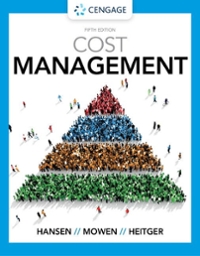Question
Reverse Acquisition - Exercise 1: On January 1, 2018, Company A acquired 100% of Company B by issuing 3,000 shares of its own common stock.
Reverse Acquisition - Exercise 1:
On January 1, 2018, Company A acquired 100% of Company B by issuing 3,000 shares of its own common stock. Company A and B are both publicly traded companies. On the transaction date, the listed per share stock prices of Company A and B, were $130 and $60, respectively.
The following are the condensed balance sheets of A and B, and the fair values of companies' assets and liabilities just prior to the transaction.
Abbreviation: Carrying amount = "CA", Fair value = "FV", Additional paid in capital = "APIC"
1/1/2018 Balance Sheet Company A:
CA FV CA FV
Current assets 55,000 60,000 Liabilities 40,000 70,000
Non Current Assets 85,000 140,000
Total Assets $140,000
Equity
Retained Earnings CA 80,000
Common Stock CA 2,000
($1 Par value)
APIC CA 18,000
Total liabilities and Equity 140,000
1/1/2018 Balance Sheet Company B:
CA FV CA FV
Current assets 90,000 120,000 Liabilities 100,000 150,000
Non Current Assets 210,000 380,000
Total Assets $300,000
Equity
Retained Earnings CA 140,000
Common Stock CA 6,000
($1 Par value)
APIC CA 54,000
Total liabilities and Equity 300,000
(1) What company in this transaction is the legal acquirer, the accounting acquirer, and the accounting acquiree?
(2) Use FASB codification and prepare the consolidated financial statements that should be reported by Company A on January 1, 2018.
(a) At what amounts the current assets, noncurrent assets, and liabilities should be reported in the consolidated balance sheet on January 1, 2018?
Step by Step Solution
There are 3 Steps involved in it
Step: 1

Get Instant Access to Expert-Tailored Solutions
See step-by-step solutions with expert insights and AI powered tools for academic success
Step: 2

Step: 3

Ace Your Homework with AI
Get the answers you need in no time with our AI-driven, step-by-step assistance
Get Started


